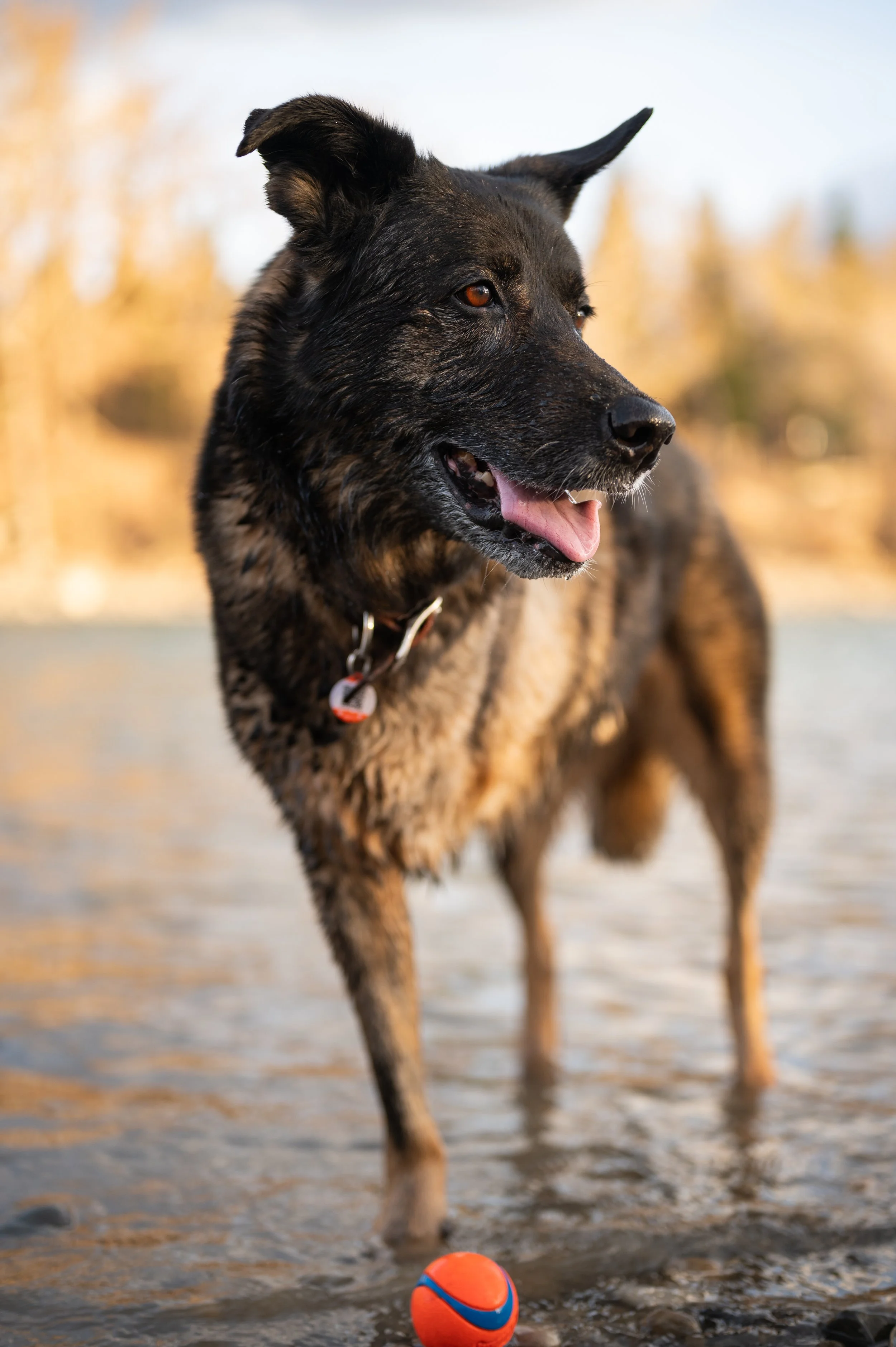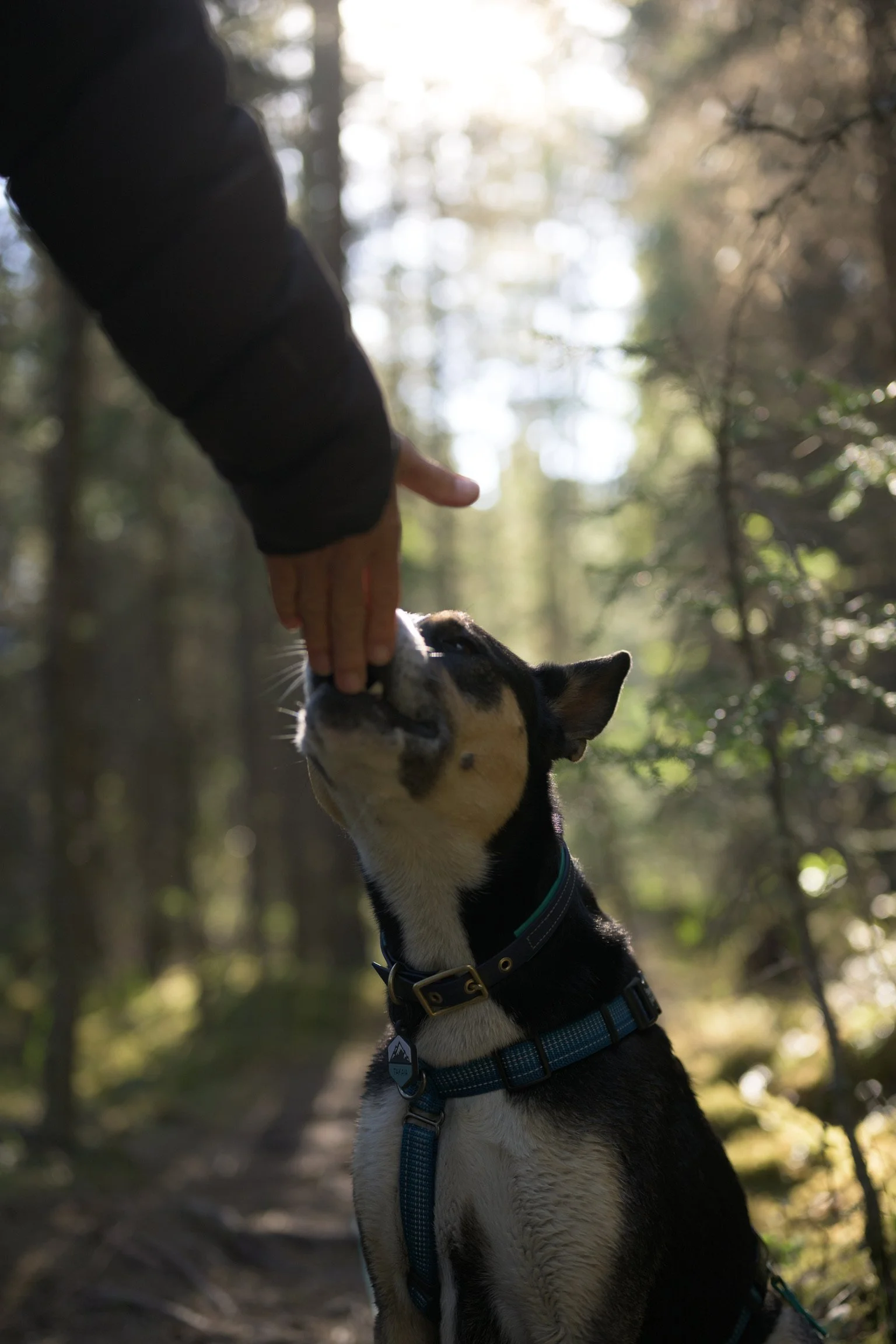What is positive reinforcement Training?
Discover How Dogs Learn
How To Get Started
Click the orange buttons to explore more short video examples.
What sets us apart
At Noble Woof Dog Training, several factors set us apart from other dog training companies:
Positive Reinforcement Approach: We specialize in positive reinforcement training techniques. We focus on rewarding desired behaviors rather than punishing unwanted ones. This creates a supportive and enjoyable learning environment for both dogs and their owners.
Customized Training Programs: We understand every dog is unique, which is why we tailor our training programs to meet the specific needs and goals of each individual dog and their owner. Whether it's basic obedience, behavioral issues, or specialized training, we develop personalized plans to ensure success.
Experienced and Compassionate Trainers: Our team comprises highly skilled and compassionate trainers, holding high-level credentials in the industry. With certifications from reputable organizations such as the Certification Council for Professional Dog Trainers and the International Association of Animal Behavior Consultants, alongside a dedication to continuous professional development, our trainers actively participate in continuing education conferences to remain updated on the latest advancements in dog training techniques and methodologies. Their extensive knowledge and expertise allow them to deliver expert guidance and support, ensuring the success of every training program.
Focus on Relationship Building: We believe that building a strong bond between dogs and their owners is essential for successful training. Our programs emphasize communication, trust, and mutual respect, fostering a deep and lasting connection between dogs and their families.
Commitment to Client Satisfaction: We are committed to providing exceptional service and exceeding our clients' expectations. From the initial consultation to the completion of training, we strive to ensure that every client has a positive and rewarding experience with Noble Woof Dog Training.
Overall, our dedication to positive reinforcement, personalized training, experienced trainers, relationship building, and client satisfaction sets us apart as a leader in the dog training industry.
Why positive reinforcement?
Cutting edge research in the industry has proven time and time again the most reliable way to train dogs is with Positive Reinforcement Training (R+).
R+ training focuses on strengthening the human-animal bond using evidence-based animal learning theory. With these methods we choose work with instead of against the natural instincts of the dog. Instead of focusing on stopping unwanted behavior by startling or scaring the dog, we focus on teaching them what we want them to do instead, We do this by rewarding desirable alternative behaviors. Reward-based training does not mean the dog never suffers “consequences” for unwanted behavior, however the primary focus of the training is on setting the dog up for success by teaching them what we want them to do before mistakes are made.
Approaching training this way ensures the learner has the least invasive and most minimally aversive learning experience possible, and allows us to install behavioral reflexes we can live with in an efficient stress-free manner. Training this way also prevents anxiety in the animal, which makes them more enthusiastic about learning! This sets them up to learn more quickly, perform the desired behaviors more reliably, and all without any need for confusing corrections. Both the dog and the human get to enjoy a success-driven training relationship that will result in a deeper connection and bond.
At the root of their behavior, dog’s simply do what works. They don’t have malicious intent or vindictive attitudes, and many behaviors we peg as “naughty” are just normal dog behaviors.
Dog’s will always make doggy decisions without our clear guidance. If your dog is doing something you don’t like the simple reasoning behind their behavior is the behavior is satisfying some kind of need. As Dr. Susan Friedman says, “Behavior never occurs in a vaccum or sprays out of an animal haphazardly.” Behavior always happens to satisfy a need. Our job is to identify what the need is, and then help the dog satisfy the need in a way that works for both the human and the dog.
Once the dog knows what behavior we prefer them to offer and has been properly taught to perform the behavior in a variety of settings, consistent boundaries, and humane punishment methods such as removing a reward may be used to decrease behaviors we don’t want. The basic concept is this- ignore behavior you don’t like, reward behavior you do like. Behavior that is rewarded will increase in frequency, while behavior that is ignored or prevented will decrease in frequency. If the behavior is satisfying a need, the dog will keep doing it. If the behavior doesn’t yield results, the dog will stop doing it.
This type of training creates a happy, optimistic, problem-solving dog who is excited to offer the behaviors we deem culturally appropriate in our homes and our society. Positive reinforcement training also strengthens the bond between you and your dog. By rewarding your dog for good behavior, you're building trust and communication. Your dog learns to associate you with positive experiences making them more likely to listen to you and enjoy spending time with you.
So, in simple terms, positive reinforcement dog training is all about teaching your dog what behaviors you want using rewards and praise, and it works by making them feel good when they do the right thing. It's like being their cheerleader and coach rolled into one!
A dog who is excited about training is a dog that can be counted on to be reliable even in the face of distraction.
Read this position statement by The American Veterinary Society of Animal Behavior on the use of punishment techniques in dog training.
WHAT ABOUT PUNISHMENT?
Many professionals in the field of dog training and animal behavior do not recommend punishment as a primary method for behavior modification. This stance is supported by a growing body of research and evidence-based practice. Here are some reasons why professionals generally avoid punishment:
Negative Side Effects: Punishment-based methods can lead to negative side effects such as fear, anxiety, and aggression in dogs. Dogs may become stressed or fearful in response to punishment, which can damage the bond between the dog and their owner and lead to further behavioral problems.
Ineffective Long-Term Results: While punishment may suppress unwanted behaviors temporarily, it often fails to address the underlying cause of the behavior. Without addressing the root cause, the behavior may resurface or manifest in other ways over time.
Risk of Escalation: Punishment-based techniques can escalate in severity over time as dogs become habituated to mild forms of punishment. This may lead to the use of increasingly harsh methods to elicit the desired response, which can have serious implications for the welfare of the dog.
Lack of Clarity: Dogs may not always understand why they are being punished, especially if the punishment is not immediately connected to their behavior. This can lead to confusion and anxiety, making it difficult for the dog to learn and comply with commands.
Focus on Negative Rather than Positive: Punishment-based methods focus on what the dog is doing wrong rather than what they should be doing instead. Positive reinforcement techniques, on the other hand, focus on rewarding and reinforcing desired behaviors, which promotes learning and cooperation.
Overall, professionals advocate for positive reinforcement-based methods because they are more effective, humane, and conducive to building a strong bond between dogs and their owners. Positive reinforcement techniques focus on rewarding desired behaviors, teaching dogs what to do instead of what not to do, and fostering a positive learning experience for the dog.
Don’T I need to be alpha?
Absolutely Not. Please don’t. This is why.
A lot has changed in the industry of dog training over the last 30 years, but general knowledge can be slow to catch up and the media is often no help.
Many of the popularized “traditional” obedience training methods touted in “Pack-Leadership Theory”, “Alpha Theory,” or “Dominance Theory” are nothing more than wives tales. They have never stood up to modern research on animal behavioral sciences or learning theory. These training beliefs promote that unruly dogs require a heavy hand in order to change. Usually referred to as balanced training, these trainers will tell you that you need to gain physical control over your friend’s behavior using pain, fear and intimidation to force submission. Research continues to prove that using balanced training is very damaging to the human animal bond and decreases an animal’s ability to problem solve and learn new things. This article by the New York Times agrees that …”pet owners should avoid programs that use punishment or pack-theory techniques because they're not scientifically supported and are controversial in the training community.”
How will my dog learn without consequences?
Short answer. Dogs work harder and more reliably to access outcomes that make them feel good.
The question "How will my dog learn without consequences?" implies a common misconception that positive reinforcement training lacks consequences. In reality, positive reinforcement training does involve consequences. When a dog performs a desired behavior and receives a reward, such as treats, praise, or playtime, they learn that this behavior leads to positive outcomes. This encourages them to repeat the behavior in the future.
Additionally, dogs are motivated to work harder and more reliably to access outcomes that make them feel good. In other words, dogs are inclined to repeat behaviors that result in rewards or positive consequences. This reinforces the importance of using positive reinforcement techniques to teach and train dogs effectively.
We focus on setting the environment up so the dog is most likely to make the choices we want them to make, so we can reward them. If that sounds impossible, don’t worry! We have decades of experience helping our human and canine learners succeed. We will show you how!





